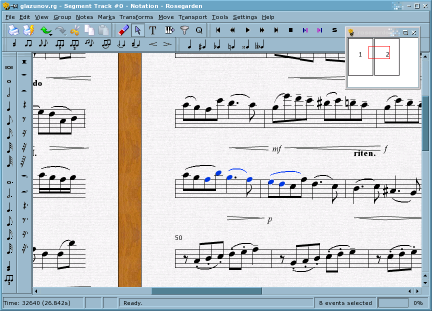

The usual way the notation editor displays staffs is known as Linear layout: one staff on top of another, with each staff as a single, horizontally scrollable long line. Some of the functions of the editor (such as the Rulers) are only available in Linear layout.
However, you can also display staffs in two different page-based layouts: Continuous Page and Multiple Page.
In Continuous Page layout, the music is arranged in one infinitely-tall page of the same width as the window. Each staff breaks at the end of a line, starting a new line below the remaining staffs.
In Multiple Page layout, the music is divided up into real pages much as it will be when printed. The size of each page is calculated so that approximately the same amount of music will fit on each line as it will when actually printed (according to the point size specified for the printing resolution in the configuration dialog). The printed version is unlikely to be exactly the same, as it depends on the precise paper size and margins in use when printing, but it should be fairly close if you happen to be using A4 paper.

Most, but not all, of the display and editing functions work in the page layout modes as well as in linear layout.
To switch between these layout modes, use the Linear Layout, Continuous Page Layout and Multiple Page Layout menu functions.